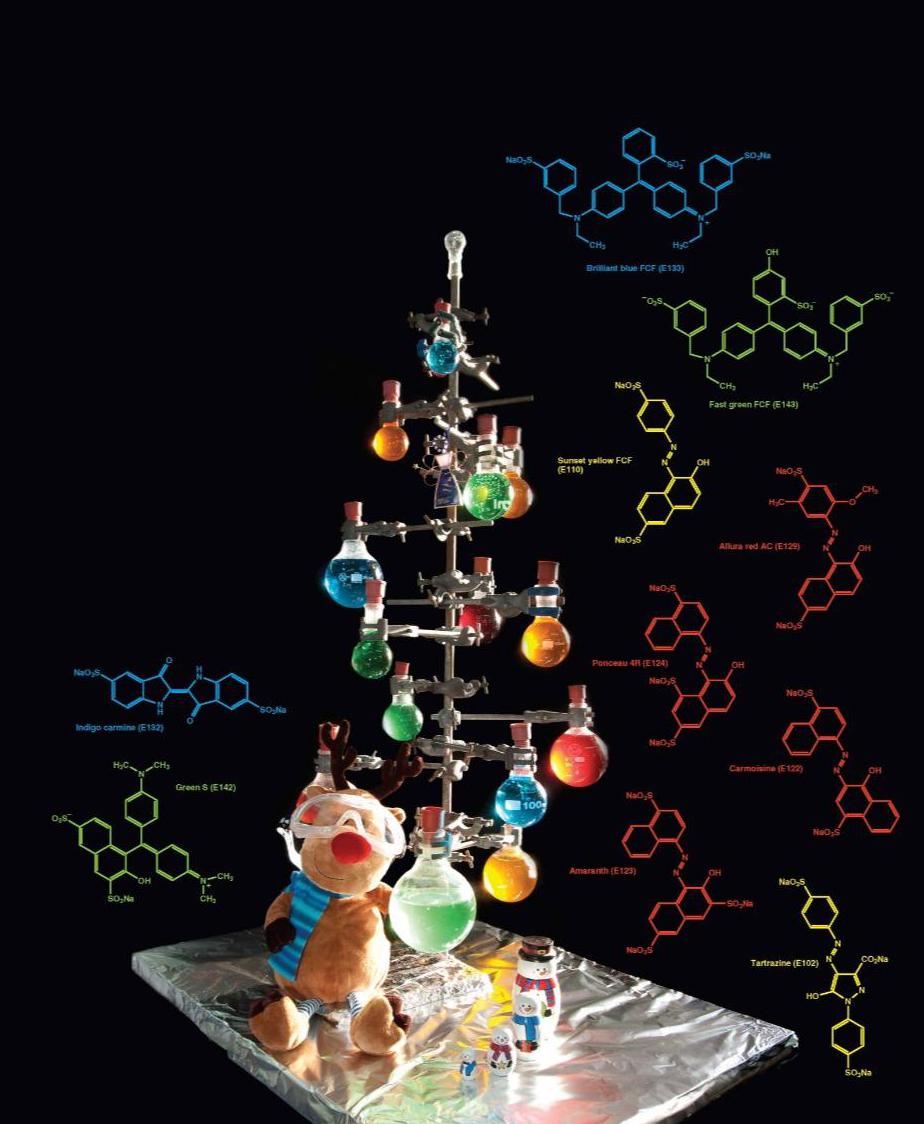
Most food dyes are organic compounds featuring aromatic rings (similar to benzene) and have conjugated systems (alternating double and single bonds). These features enable the molecule to absorb light, exciting an electron to a higher energy pi orbital. Upon relaxation, light is emitted, which depending on the molecule may fall within the visible region of the spectrum. The wavelength emitted depends on, but is not the same as, the light absorbed.
Generally, the greater the degree of conjugation within the molecule, the longer the wavelength of the light absorbed. For example, the dye carmosine absorbs at 510 nm, and has a smaller conjugated system than brilliant blue FCF, which absorbs at 628 nm. Dyes are often mixed to give a desired shade. In the photo, the blue solution contains brilliant blue FCF, the green contains a mixture of tartrazine and green S, the yellow contains tartrazine, sunset yellow and ponceau 4R, while the red is carmoisine.
Your organisation does not have access to this article.
Sign up today to give your students the edge they need to achieve their best grades with subject expertise
Subscribe




